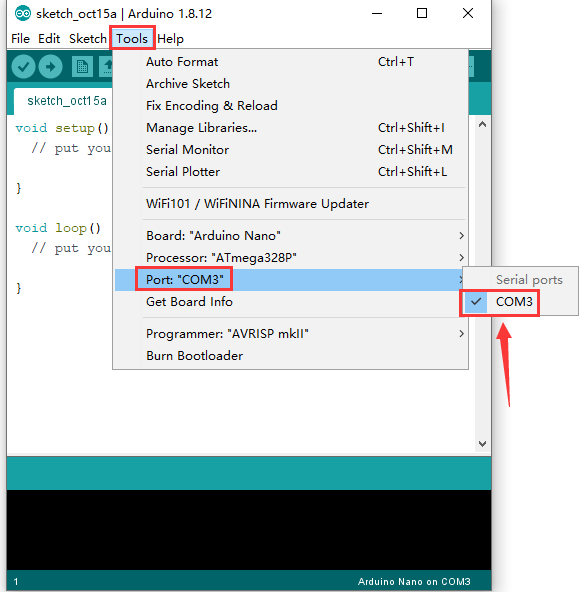KS0502 Keyestudio MEGA 2560 PRO Development Board(Black and Eco-friendly): Difference between revisions
Keyestudio (talk | contribs) (Created blank page) |
Keyestudio (talk | contribs) No edit summary |
||
| Line 1: | Line 1: | ||
== Introduction == | |||
The mega 2560 control board, among the series of MCUs , is the most popular since it has numerous pins. | |||
However, a substantial of pins don’t meet the space demand of DIY design. To tackle this issue, we roll out the Keyestudio MEGA 2560 PRO development board. In fact, its use method is as same as the official mega board, in addition to the different volume. | |||
Its processor core is ATMEGA2560-16AU. In the meantime, it has 54 digital input/output pins (of which 15 can be used as PWM outputs), 16 analog inputs, 4 channel serial communication ports, a USB connection, 1 ICSP header, and a reset button. And all ports are extended by pins with the interval of 2.54mm. | |||
What’s more, you can burn the firmware for ATMEGA2560-16AU through the built-in ICSP port. Luckily, the firmware of this chip is burnt well before delivery, therefore, you don’t need to burn firmware. | |||
The power can be supplies through USB cable, port 5V , GND(DC 5V), as well as Vin GND (DC 7-12V). | |||
== Specification == | |||
* Microcontroller: ATMEGA2560-16AU | |||
* USB to serial chip:CH340G | |||
* Operating Voltage: 5V | |||
* Input Voltage (recommended):DC 7-12V | |||
* Digital I/O Pins: 54 (D0-D53) | |||
* PWM Digital I/O Pins:15(D2-D13 D44-D46) | |||
* Analog Input Pins: 16(A0-A15) | |||
* DC Current per I/O Pin: 20 mA | |||
* DC Current for 3.3V Pin: 50 mA | |||
* Flash Memory: 256 KB of which 8 KB used by bootloader | |||
* SRAM: 8 KB | |||
* EEPROM: 4 KB | |||
* Clock Speed: 16 MHz | |||
* LED_BUILTIN:D13 | |||
== Pin Interfaces: == | |||
<br>[[Image:KS0173----5.png|600px|frameless]]<br> | |||
Revision as of 12:06, 29 April 2021
Introduction
The mega 2560 control board, among the series of MCUs , is the most popular since it has numerous pins. However, a substantial of pins don’t meet the space demand of DIY design. To tackle this issue, we roll out the Keyestudio MEGA 2560 PRO development board. In fact, its use method is as same as the official mega board, in addition to the different volume.
Its processor core is ATMEGA2560-16AU. In the meantime, it has 54 digital input/output pins (of which 15 can be used as PWM outputs), 16 analog inputs, 4 channel serial communication ports, a USB connection, 1 ICSP header, and a reset button. And all ports are extended by pins with the interval of 2.54mm. What’s more, you can burn the firmware for ATMEGA2560-16AU through the built-in ICSP port. Luckily, the firmware of this chip is burnt well before delivery, therefore, you don’t need to burn firmware.
The power can be supplies through USB cable, port 5V , GND(DC 5V), as well as Vin GND (DC 7-12V).
Specification
- Microcontroller: ATMEGA2560-16AU
- USB to serial chip:CH340G
- Operating Voltage: 5V
- Input Voltage (recommended):DC 7-12V
- Digital I/O Pins: 54 (D0-D53)
- PWM Digital I/O Pins:15(D2-D13 D44-D46)
- Analog Input Pins: 16(A0-A15)
- DC Current per I/O Pin: 20 mA
- DC Current for 3.3V Pin: 50 mA
- Flash Memory: 256 KB of which 8 KB used by bootloader
- SRAM: 8 KB
- EEPROM: 4 KB
- Clock Speed: 16 MHz
- LED_BUILTIN:D13
